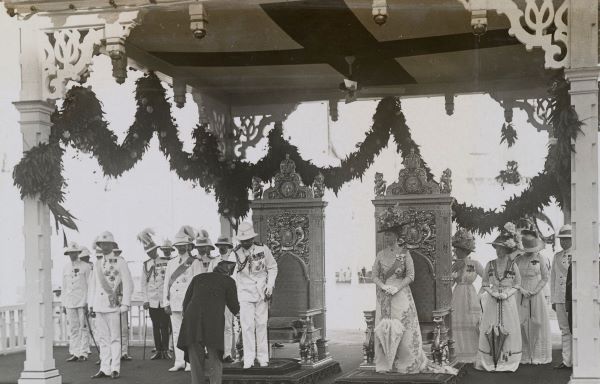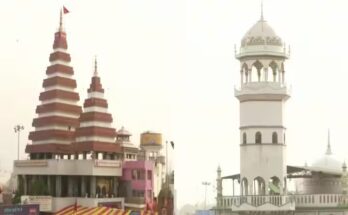
The coronation ceremony of Charles III reflects how monarchy has developed since Saxon times, but it still carries many vestiges of Britain’s imperial past and a glorious connect with India.
In the 18th century, the royal title changed from “King of England” to “King of the United Kingdom”, as successive Acts of Union joined England, Scotland and Ireland into one political unit. However, the biggest change in the royal title came in 1876, when the Royal Titles Act made Queen Victoria Empress of India. This gave her authority even over those areas of India which were not formally subject to British rule.
To give this change of title a formal announcement in India, the British authorities staged what became the first of three durbars – ceremonial events held in the British Raj to formally proclaim the imperial title. Queen Victoria’s was held in 1877, the year following the act, but Edward VII’s and George V’s were held in conjunction with their coronations.
The viceroy of India in 1877, Lord Lytton, concocted the original durbar from a mixture of Persian, Mughal and English ceremonial traditions, as a formal proclamation of the queen’s title. When her son became Edward VII in 1901, a bigger durbar was organised to proclaim his imperial title – although, like his mother, Edward remained in London.
In 1911, George V and Queen Mary travelled to India for an elaborately staged coronation durbar, where they would take centre stage. This raised tricky questions of protocol. George’s coronation in Westminster Abbey invested him with all his imperial titles, so what would be the impact of being “crowned” in India? Would it mean that his successors would not be emperors unless they held a durbar? And what did it mean for his predecessors who had not attended theirs?
The crown of England was not allowed to leave the country, so a special crown was constructed for George V to wear in India, while Queen Mary wore her “best diadem” – a heavily ornamented headband. They sat sweating under the Delhi sun in their heavy coronation robes, furs and all.
In the end, the Delhi durbar consisted of Indian princes paying homage to the king-emperor in a ceremony that owed as much to European feudalism as it did to Indian tradition. Plans for George VI to have an Indian durbar were postponed in the post-abdication sense of general exhaustion, and abandoned as war loomed.
One item of the crown jewels is a stark reminder of empire – but it will notably be missing from the coronation ceremony. The Koh-i-Noor diamond was taken by the British after their wars with the Sikh kingdom of Punjab, and presented to Queen Victoria in 1849. It was reshaped by Prince Albert and fitted into the crown jewels. Both Queen Alexandra and Queen Mary wore it at their coronations, though Queen Mary, tactfully, did not wear it for the 1911 coronation durbar.
Seeing the diamond as symbol of British imperial acquisitiveness, the Indian government has demanded its return, though, historically, both Pakistan and Iran could also lay claim to it. Camilla, the Queen Consort, has decided to be crowned in Queen Mary’s crown, from which the famous diamond has been removed.
The controversy about the Koh-i-Noor will doubtless continue, but won’t intrude on this coronation ceremony.
(Courtesy: The Conservation)



